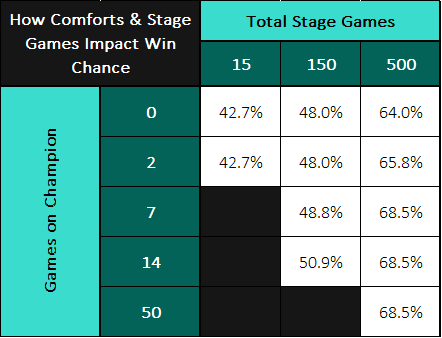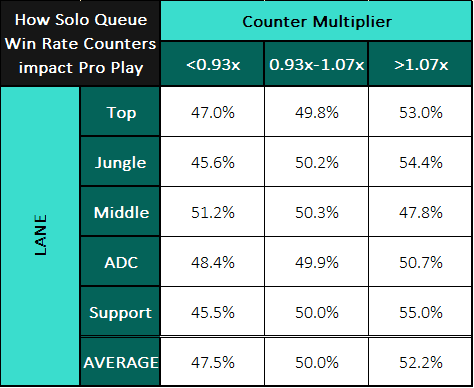LoL: How to Win Draft in Pro Play
A League of Legends Head Coach is responsible for a great deal. A grand majority of this happens behind the closed doors of the gaming house. Apart from a few heavily edited VODs, we as outsiders have very little knowledge of what exactly they get up to. Apart from rumours and hearsay we have little to go on as far as to the quality of these individuals.
That is, until it comes to the Draft. At this point they step into the spotlight, quite literally. They join the team on stage, jaunting around on camera with their notebooks in hand.
Of course, a good coach will follow the flow of the team and allow the experience of their players to help dictate their decisions. However, they should have the final say. After all, whilst the players are grinding away actually playing the game it is the coaches role (among others) who will research and deliberate on how best to playout the draft.
Therefore, this gives us something concrete to point at and say “That was the coaches doing” then treat them accordingly. Yet, as much as it is discussed the Drafting phase is still a gigantic unknown.
Since the number of possibilities in a draft of 160+ Champions is so broad and the number of games (per patch) so small — it’s impossible to evaluate a draft simply based on it’s success. After all, how often is an exact 5v5 draft repeated each week?
We must therefore use more novel (and less reliable) methods to determine the Draft winner each game. For a vast majority, this is the “And here’s why…” method. This is where the evaluator uses their knowledge of the game to argue the case.
I have a lot of respect for this approach, especially people who seem to be able to do it with some degree of accuracy. To be able to hold that knowledge within their head and do the evaluation on the fly is quite the feat. The only issue is that it is never tracked. A lot of opinions and no way of knowing who’s making it all up and who’s legitimately onto something.
That is why I spent over a year experimenting and building methods to better understand the draft. I even worked with coaching staff from an LEC team over the Spring Split, doing what I could to artificialise their intelligence.
Now, the good thing about this method is that we can evaluate the performance at each iteration and determine whether we’re on the right path. The general rule is that if the model predicts the results of the game more accurately than the betting companies do AFTER draft information has been considered, we’re onto something. This is called the “alpha”.
For instance, if we showed the model the amount of stage games a player has on the Champion and then it predicted those games with more accuracy — we know “amount of stage games on Champion” is valuable. Roughly speaking.
The last few months I’ve been writing articles that detailed components to this final model. Now, I will try to summarise it all together.
Before I begin I must state three things:
- I have not solved drafting. There are still unknowns. Whether I know about them or not. For instance, I could never get scaling to work— even though I know in my bones that it will be coming into play. Then there’s a lot of stuff I haven’t even considered. I would genuinely appreciate any suggestion of alternative methods or features I haven’t considered.
- “If it works why don’t you make infinite money betting”. Because although the model has an “alpha” (i.e. it knows more than the market), that alpha does not yet consistently exceed the cut the house takes. My personal belief is that it could, it would just require a lot more work and I’m not interested in going down that rabbit hole (yet).
- I base all my work on top-tier leagues: LEC, LCS, LEC and LPL. The results will be vastly different to your Solo Queue games, your Clash tournaments or even lower tiered professional leagues like the LFL. With that out the way, here are what I consider the four most important factors influencing a professional game’s draft (in reverse order of important):
A Brief Note on “Team Diff.”
By far the biggest factor on determining who will win between two teams is the teams themselves. This has nothing to do with draft. In fact, bookies can predict the result of a game with a roughly 63% accuracy before they even walk on stage. The influence of this vastly outweighs the impact of draft. To compare, my work suggests that roughly 10% of games are influenced by draft and it’s the quality of teams, performance on the day and random luck that does the rest.
4. Players Champion Comforts
I spoke about this one in this article. The findings were simple: if you have more games on a Champion then you’ll have a better chance of winning the game when you play them again. It looked something like this:

How the number of stage games impacts the players win chance in future stage games.
There’s very fast diminishing returns, where there’s a big difference between 0 to 14 stage games but nothing notable after this point.
3. Player and Champions Influence on Early Gold Leads
This one is a bit more complex. It’s not as simple as “does my Top Laner get a Gold lead” but how it impacts the rest of the game based on the Champion their playing and playing against. As a reminder, I never use “Gold Difference” as a metric, which I spoke about in the article on “snowballatility”. The summary is that a players Gold vs. the enemy team is far more indicative of their future performance then just comparing it to their lane opposition.
To simplify this whole concept: are the players likely to get ahead on Champions that both allow them to get ahead and use their lead effectively. On the flip side, are players who are likely to fall behind on a Champion that can mitigate the disadvantage of falling behind. To condense even further: Are your carries on carries & can your weak side still provide utility?
2. Counters and Synergies
This is a multitude of points compressed and squeezed into one broad category. How well does your Champion interact both with your team and against the opposition? This can be both in respect to the laning phase and how it impacts their early Gold, or more nuance interactions in the late-game (a Yasuo wall blocking a Miss Fortune ultimate, or whatever).
In general, lane counters have the biggest impact. What I mean by this is Mid vs. Mid, but it also includes ADC vs. Support. After that, it tends to be the interaction with Junglers — since these will impact both team fights AND the early game Gold leads.
If you haven’t read this article on counters in pro play, it will explain in far more detail. The summary is that we have to rely on high-elo solo queue data to evaluate counters since there’s not enough games from pro. This is roughly how they translate:

How solo queue counter win rates correlate to professional win rates.
You’ll probably need to read the article above to understand this in detail, but what it’s showing is that if a lane is a solo-queue counter it TENDS to also impact the pro win rates.
1. Strength of the Champion
Finally, and if you follow my Twitter you’ll know it’s the area I study most frequently, it’s the overall strength of the Champion in the meta. There are Champions that are just strong for professional play. Sometimes, it takes a while for these to get discovered and abused, but there is always a handful. These are your 100% pick or banned Champions, the ones that consistently hit above a 60% win rate.
I’ve been tracking this overtime by asking the AI to create a tier-list of Champions for each patch and then I evaluate how well they actually perform in pro play. Each week, without fail, the A-tier outperforms the C-tier. Believe it or not, put good players on good Champions and you win more games.
This effect often outweighs all the others. There’s games where a subpar player is first-timing that new broken top laner into a countered match-up and they still somehow carry the game.
If I had to design the model with just one feature, I’d always pick this one. Picking good Champions is the by far the best thing a team can do.
In Summary
These are the four most important draft related factors that I have found to impact the result of a professional top-tier game. Of course, like I mentioned at the beginning there is much more going on that I’ve yet to discover. There’s also the fact that Draft is only a small factor in many that determines the final result of the game.
Yet still, I hope this provides a baseline for others to further the work and discover more within this highly complex subject. Or, at the very least it provides enough content for you to argue over — let’s just keep it constructive.